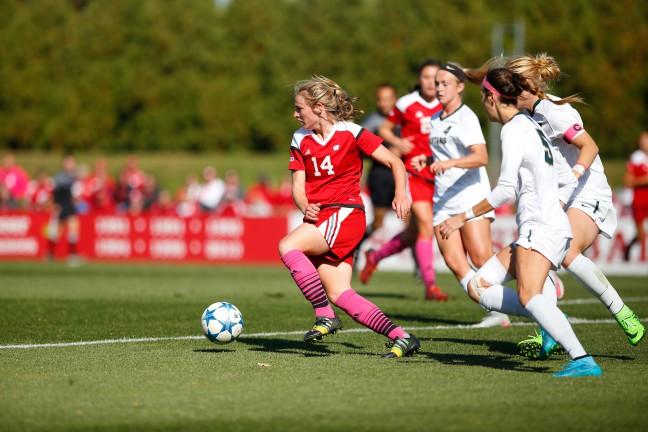Being a Division 1 athlete is not easy by any means. Every day I wake up to yesterday’s workout persuading me to press snooze on my alarm clock. My body aches in pain, yet I’m still expected to wake up with a smile on my face, go to class, get straight A’s and study for hours on end. And every day I do wake up with a smile on my face, show up to the next workout and make the most out of this unique experience.
The hardest part of being a college athlete doesn’t lie on the practice field, or in even within the countless physical setbacks that try to tear you down. It is being faced with completely unexpected, and frequently ignored, undertones of sexism in Division 1 athletics. It exists within each odd pinned against female athletes.
It is 2017 — 43 years since the establishment of women’s varsity sports on campus. Since the days of severe gender bias surrounding athletics, female athletes have outdone themselves. We have made significant strides toward proving we are more than worthy of University of Wisconsin’s prestigious athletic reputation.
Even with an overwhelming amount of NCAA appearances, Big Ten Championships and top recruiting classes from across the country, the countless accomplishments from female athletes are merely just a number. There are still injustices, 43 years later, committed within the walls of Camp Randall that outsiders and spectators are not aware of.
Prejudice against female athletes is present on and off the field. Gender bias is the most prevalent when we afford praise and adoration to high-profile men’s teams that actually perform worse than women’s teams — for no reason but their gender. We hold up our signs to protest social issues during the Women’s March, but maybe some of those signs should read: “Female athletes deserve the same treatment as male athletes.”
The student body controls ticket sales. The student body makes the active decision to perceive athletes differently based on gender. And the student body should acknowledge its responsibility in contributing to this inequality. The athletic department can only do so much to change these social standards — incoming revenue can only go so far to improve the demand for women’s sports. But who said the bias has to be changed through money?
Wisconsin Badgers men’s ice hockey had a total attendance of 159,284 for the 2016 season. The women’s ice hockey team only had an attendance of 35,939 — a fourth of the men’s. The men’s record for this season was 8–19–8, without advancing to the NCAA tournament. The women’s record was 34-4-1, and they went on to win the conference tournament, conference regular season and advanced to the Frozen Four in the NCAA Tournament. Sadly, this probably comes as a surprise to most readers.
As a fellow athlete on this campus, every ounce of my respect goes to men’s sports. I see first-hand the hard work they put in every day, and I understand the unintentional circumstances that surround them. But to experience hard work paying off in a game is a priceless experience. Male athletes are rewarded with a simple glance into the echoing stands, without seeing an open glistening seat in the stadium. That is a moment an athlete will never forget. That is a moment many female athletes rarely get.
It is gender bias, without a doubt in my mind. But it is not men’s sports putting the odds against female athletes — it is society, as a whole.
Together, we accumulate these perceptions and together, we decide where to hand “special treatment.” It is not an easy change, but it is a lingering unspoken challenge that continues to drive division and tension within our athletic department. It is important to be aware of what goes on behind the curtain of Division 1 athletics. I hope one day, female sports can acquire a big enough attraction as any high-profile men’s sport — where I can look up into the stands and know my team is being rewarded in the same way as every other athlete on campus.
Steph Fabry (sfabry@wisc.edu) is a junior majoring in journalism and strategic communications.


